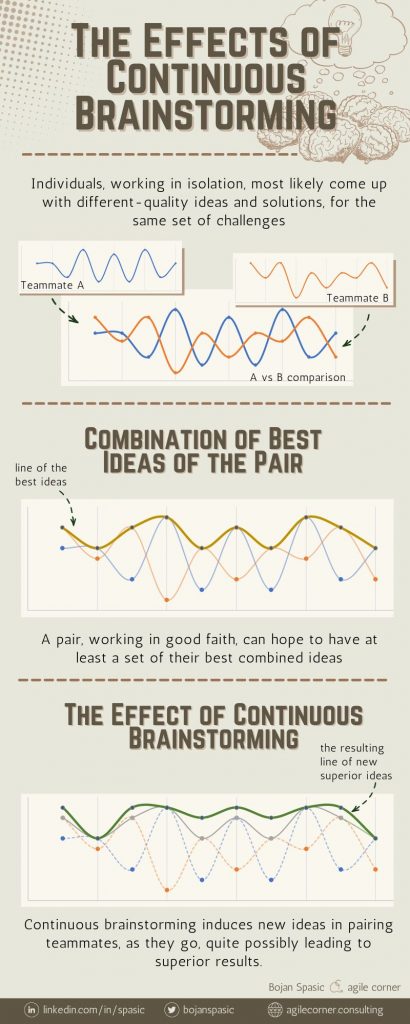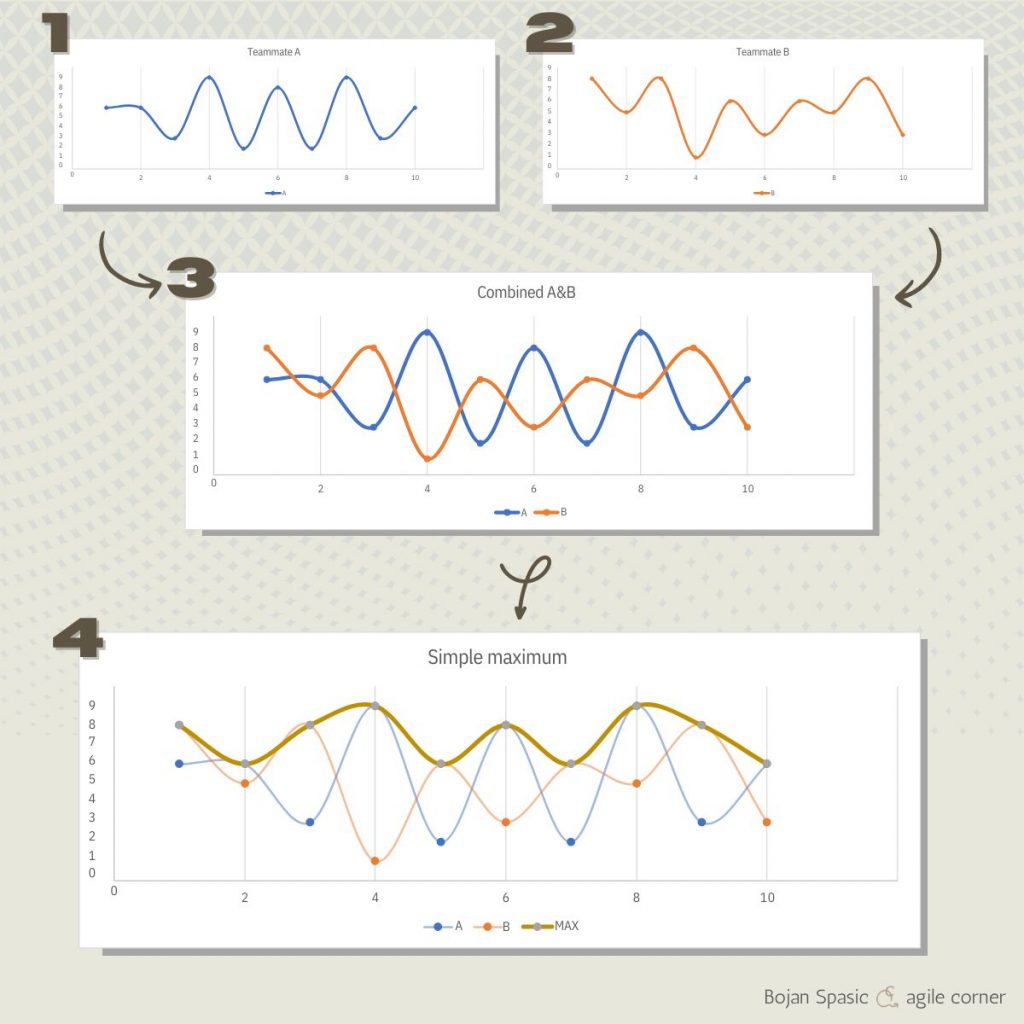
Why would you even consider not working on a task alone?
How does working together bring benefits to your team’s results?
Take a look at this example:
Consider any cognitive-challenging task you do in your day-to-day work.
The set of all possible solutions is quite possibly a huge one, ranging from the poorest (grade 0) to the optimal one (grade 9):
⓪ ① ② ③ ④ ⑤ ⑥ ⑦ ⑧ ⑨
Given the constraints (e.g., knowledge, experience, timeframe/deadline, the current state of mind, etc.), one teammate would quite possibly come up with a handful of solutions, which will vary in quality (graded with 2 and 6, respectively, in this example):
⓪ ① 2️⃣ ③ ④ ⑤ 6️⃣ ⑦ ⑧ ⑨
Chances are that another teammate will not come up with the same results. Given the same set of constraints, another teammate would most likely come to a different set of solutions (graded with 1 and 8, respectively, in this example):
⓪ 1️⃣ ② ③ ④ ⑤ ⑥ ⑦ 8️⃣ ⑨
Combining their perspectives, the team is, at least, more likely to have the solution closer to the optimal:
⓪ 1️⃣ 2️⃣ ③ ④ ⑤ 6️⃣ ⑦ 8️⃣ ⑨
Consider this a start and an excellent foundation to uncover and address other dysfunctions.
Have you ever wondered how to produce the best possible solution given the skills and constraints of your team?
This quick hack takes your team’s results to the next level:
Team members working in isolation take your team only so far, as discussed above.
Having team members working together on the same challenge does not only give a chance to the team to come up with the best solution available. It also helps individuals reevaluate their own decisions and perspectives, influenced by their experience, possibly hindering them in considering the best solution.
Even a junior, or less experienced teammate in the pair, can induce such a perspective shift with their naive questions.
Problem-solving in pairs has other benefits, which include the following savings of time and effort as a bonus:
- Prevent time and effort wasted on asynchronous code reviews.
- Save time and effort, and prevent frustration due to dev-QA ping-pong.
- Save time and effort bringing up skills of both new and junior team members, and make it more effective.
What does combining individual results of team members look like?
The following diagrams show the progression of combining individual results to achieve a collaborative maximum for the pair of teammates.
The setup of the example:
📈 Charts #1 and #2
- Two individuals were solving the same problem separately.
- The quality of their chosen solution was graded (from 0 to 9).
- The results of those 10 challenges were put into individual charts.
📈 Chart #3
- The results were finally combined into a single chart showing individual differences.
📈 Chart #4
- The final chart shows what could be the maximum grade of combined results had they been working together, choosing the best solution for each challenge.
Since this post is for illustration purposes, the assumption is that the team members are capable of choosing the best out of their proposed solutions, of course.
Is combining individual results all there is to teamwork?
Are there any additional benefits of working together, as far as the quality of team results is concerned?
It turns out there are! Keep reading!
By combining individual results for a set of the same challenges, one can hope to have the best solutions individually attainable.
However, by working together and actively solving problems together, teammates engage in the activity of CONTINUOUS BRAINSTORMING.
What happens is that they unlock dormant or novel solutions unavailable to them while working in isolation.
Simply by asking “dumb questions” or by taking a naive point of view, a novel perspective is introduced, paving the path to previously inaccessible solutions. Furthermore, constrained by experience, some solutions might get dismissed, which are otherwise perfectly suitable for the new context.
📈 The illustration shows the CONTINUOUS BRAINSTORMING effect.


